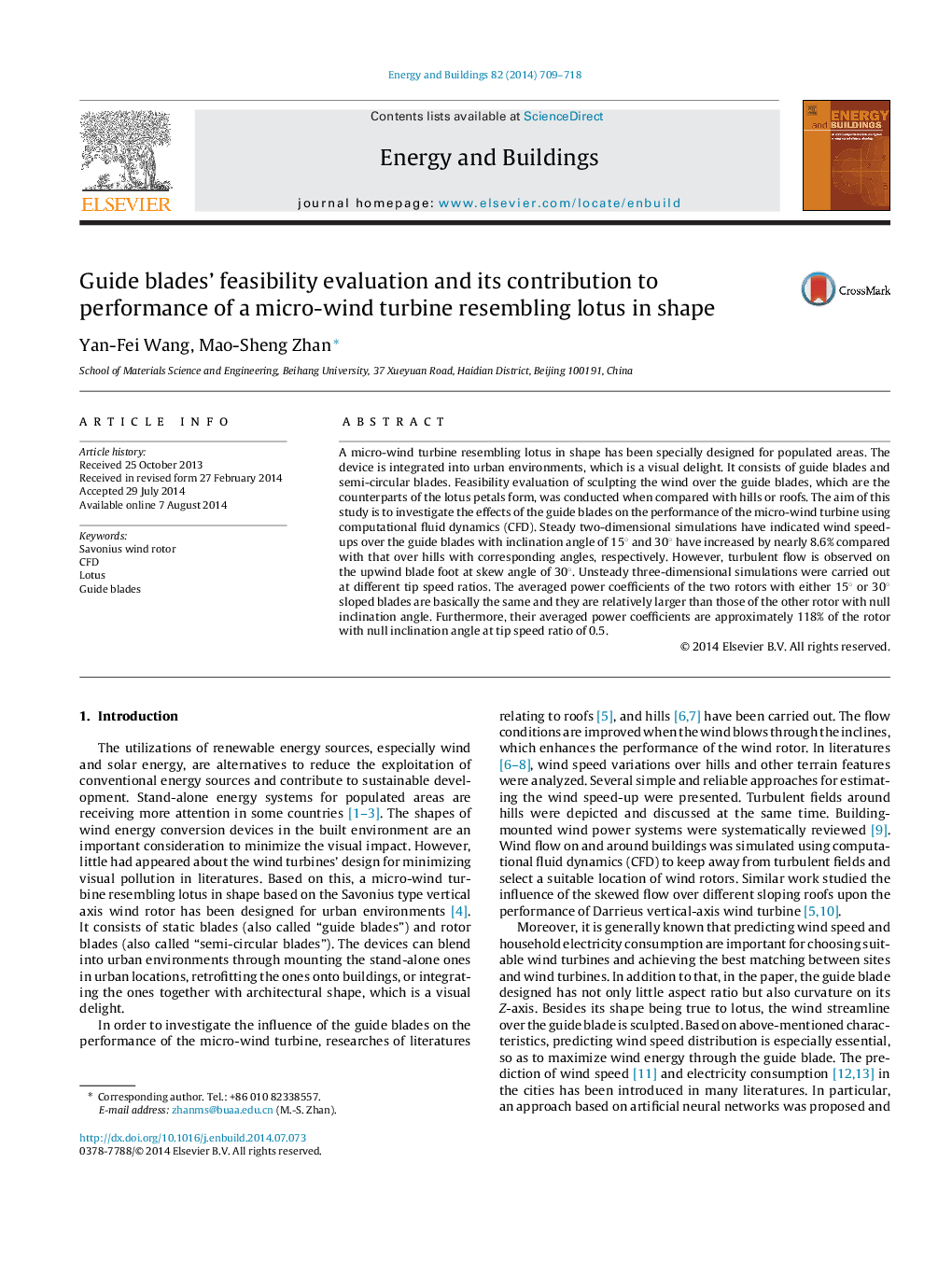| Article ID | Journal | Published Year | Pages | File Type |
|---|---|---|---|---|
| 262710 | Energy and Buildings | 2014 | 10 Pages |
•Feasibility evaluation of guide blades was conducted by comparison.•The performance for the blades’ each section was analyzed by CFD.•The power coefficients of the rotor with 15° guide blades are 118% of the other with null angle.
A micro-wind turbine resembling lotus in shape has been specially designed for populated areas. The device is integrated into urban environments, which is a visual delight. It consists of guide blades and semi-circular blades. Feasibility evaluation of sculpting the wind over the guide blades, which are the counterparts of the lotus petals form, was conducted when compared with hills or roofs. The aim of this study is to investigate the effects of the guide blades on the performance of the micro-wind turbine using computational fluid dynamics (CFD). Steady two-dimensional simulations have indicated wind speed-ups over the guide blades with inclination angle of 15° and 30° have increased by nearly 8.6% compared with that over hills with corresponding angles, respectively. However, turbulent flow is observed on the upwind blade foot at skew angle of 30°. Unsteady three-dimensional simulations were carried out at different tip speed ratios. The averaged power coefficients of the two rotors with either 15° or 30° sloped blades are basically the same and they are relatively larger than those of the other rotor with null inclination angle. Furthermore, their averaged power coefficients are approximately 118% of the rotor with null inclination angle at tip speed ratio of 0.5.
